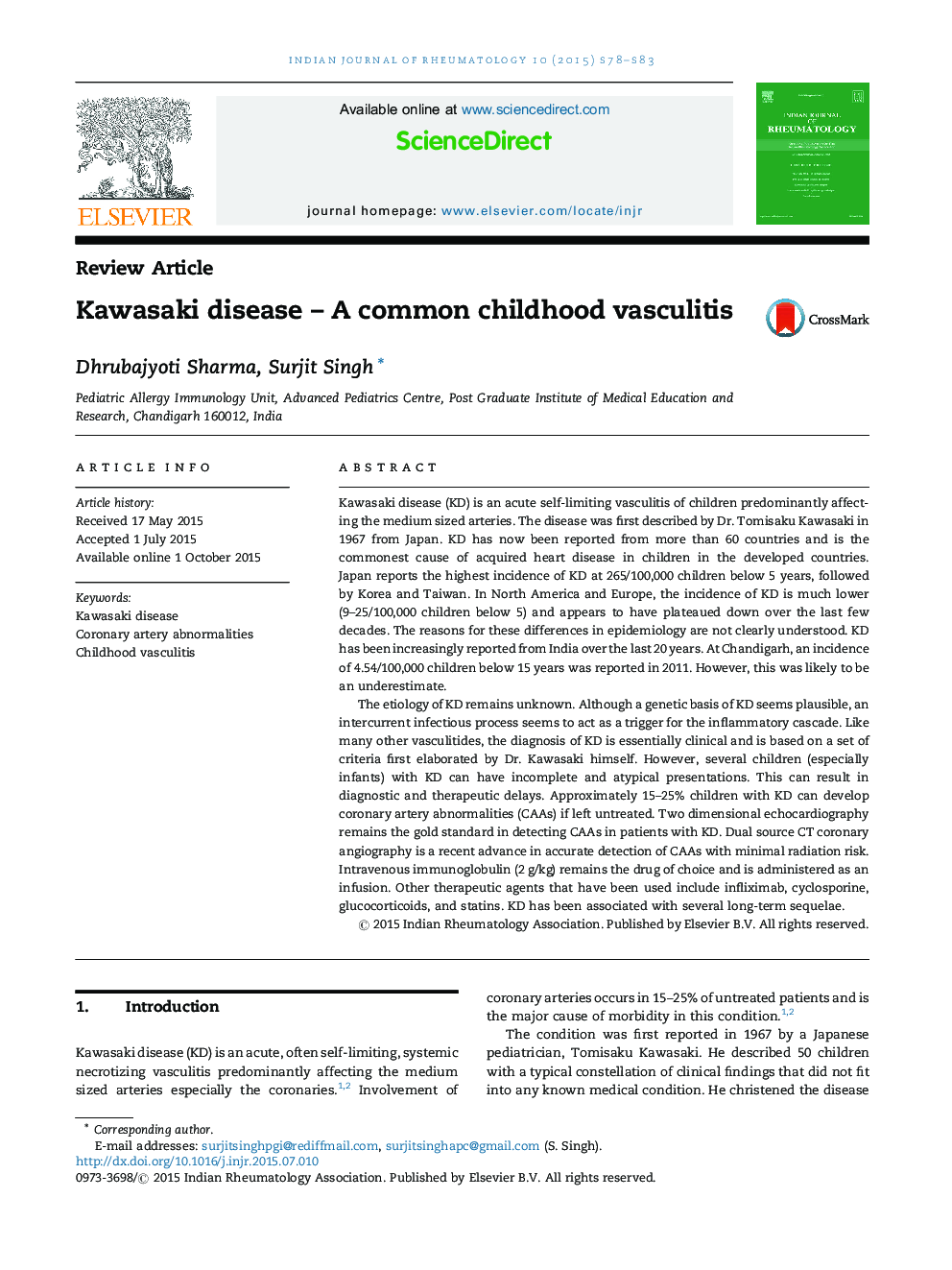| Article ID | Journal | Published Year | Pages | File Type |
|---|---|---|---|---|
| 3356725 | Indian Journal of Rheumatology | 2015 | 6 Pages |
Abstract
The etiology of KD remains unknown. Although a genetic basis of KD seems plausible, an intercurrent infectious process seems to act as a trigger for the inflammatory cascade. Like many other vasculitides, the diagnosis of KD is essentially clinical and is based on a set of criteria first elaborated by Dr. Kawasaki himself. However, several children (especially infants) with KD can have incomplete and atypical presentations. This can result in diagnostic and therapeutic delays. Approximately 15-25% children with KD can develop coronary artery abnormalities (CAAs) if left untreated. Two dimensional echocardiography remains the gold standard in detecting CAAs in patients with KD. Dual source CT coronary angiography is a recent advance in accurate detection of CAAs with minimal radiation risk. Intravenous immunoglobulin (2Â g/kg) remains the drug of choice and is administered as an infusion. Other therapeutic agents that have been used include infliximab, cyclosporine, glucocorticoids, and statins. KD has been associated with several long-term sequelae.
Related Topics
Health Sciences
Medicine and Dentistry
Immunology, Allergology and Rheumatology
Authors
Dhrubajyoti Sharma, Surjit Singh,
